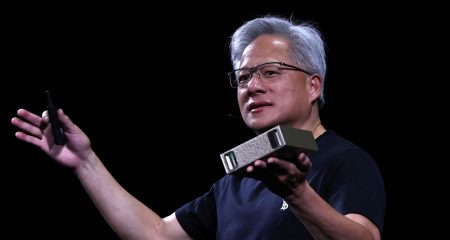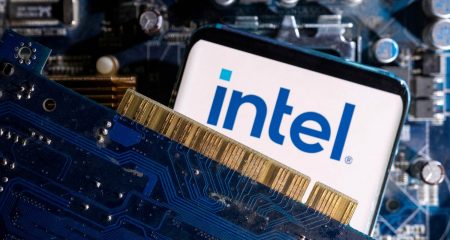
When Stephen Elop took over at Nokia, he likened the company’s predicament to a man standing on a burning oil rig, debating whether to brave the cold sea or the flames. Nokia has since dived headlong into change — and is yet to surface. Microsoft, the company Elop left to join Nokia, is now toying with a similar plunge into unknown waters.
The plunge in question is the launch on 25 October of Windows 8, Microsoft’s latest operating system (OS). That may not sound like the unknown — Microsoft has been in the operating system business since 1975 — but beneath the surface lurks a completely revolutionary idea.
That idea isn’t in the technology itself. Yes, Windows 8 is the first Microsoft operating system designed from the ground up to take advantage of the new wave of tablet computers. And yes, it’s the first OS that can work in both touch-screen and traditional desktop modes, allowing you, in theory, both to work and to play on a single device. As exciting and important as these developments are, the really big leap is in the business model. For nearly 40 years, Microsoft has run on the traditional software model, reaping substantial upfront payments for packages of software.
Windows 7, its previous OS, is a good example of this model in action. It was launched in 2009 with a list price of US$320 for the premium version or $220 if you upgraded from a previous version of Windows. Since then it has sold over half a billion copies.
Granted, many of those were sold at a discounted rate because they were preinstalled on new computers by manufacturers, but the net result is still tens of billions of dollars in revenue.
So how much will Windows 8 cost? Just under $40 for an upgrade to the premium version or $15 if you bought your (Windows) computer after June 2012. These prices expire in February 2013, but they’re still startlingly low — less than 20% of the price of Windows 7.
Even when the special offer expires, Microsoft will still sell Windows 8 at under half of what it usually charges and computer manufacturers will pay even less. So the company is giving up at least half of its revenues from Windows 8 money at a stroke. It has made a lot of money out of its current model: nearly $700bn in revenue since it listed in 1986, at an average profit margin of 28%. So why would this profit monster want to mess with the golden goose? And where will it make up the difference?
The answer to both of these questions is applications. These little packages of useful functionality, available from online marketplaces at low prices, have revolutionised the software industry.
Apple and Google, Microsoft’s fiercest rivals, have sold or given away tens of billions of apps on their own platforms (iOS and Android respectively) and in doing so placed themselves at the centre of burgeoning ecosystems of software. These ecosystems connect independent software developers directly to customers, while the owner of the platform facilitates transactions and scoops off the cream.
This model has proved incredibly successful. Within five years of launching, both companies have hundreds of millions of users on their platforms. The variety of available apps makes the platforms more attractive, pulling in more users, which spurs developers to create yet more apps, accelerating growth with every cycle.
Microsoft is betting that it can follow this model and become more of a services company than a traditional software vendor. It is making the same bet on the next version of Office, a business productivity package that includes mainstays such as Word and Excel. Instead of an upfront fee, users fill pay a monthly subscription of $8,33 to use the software.
One major challenge with this approach is that neither Apple nor Google need to make the bulk of their profits out of software. To them it’s merely a way to reinforce their existing revenue streams — high-end hardware in Apple’s case and advertising revenue in Google’s.
This allows both of Microsoft’s rivals to deeply undercut its prices. Apple’s latest operating system costs just $20. Google’s Android OS is entirely free, as is its business productivity suite, Google Docs.
Microsoft, by contrast, generates 75% of its profits from just two pieces of software: Windows and Office. If its new model is to work, Microsoft will need to harness the scale of its existing platform (Windows has over 1,3bn users worldwide) and convince its current customers to start buying apps, and lots of them.
That, in turn, depends on a wide range of quality apps being available on the day it launches Windows 8. But reports from independent analysts suggest that, just weeks before launch, Microsoft has barely 2 000 apps in its store, compared with hundreds of thousands in the Apple and Google marketplaces.
Quantity does not necessarily equal quality, but this underwhelming response should worry Microsoft. Apple had only a few hundred apps on offer when it launched its own store in 2008, but it was creating an entirely new market from scratch. There is now an entire industry devoted to making apps for every available platform. Why these developers aren’t piling into Windows 8 at the first opportunity is puzzling.
Just as worrying for shareholders is that Microsoft hasn’t been very adept at competing in other online services. Its search engine, Bing, loses billions of dollars every year. And rumours are swirling that Intel’s chief executive, Paul Otellini, told employees that Windows 8 is being released before it is completely ready. Intel, a close partner of Microsoft, has since denied the claims but many industry analysts have raised the same concerns.
So will Windows 8 be a flop, as Windows Vista was in 2007? On balance, probably not. For all its flaws, Microsoft has smelled the smoke from its own burning platform and is preparing a lifeboat. Unlike Nokia, it has recognised the need to change before its profits have disappeared. The question of whether it can follow through with that change, though, remains to be answered. — (c) 2012 Mail & Guardian
- Alistair Fairweather is GM for digital platforms at the Mail & Guardian
- Visit the Mail & Guardian Online, the smart news source




